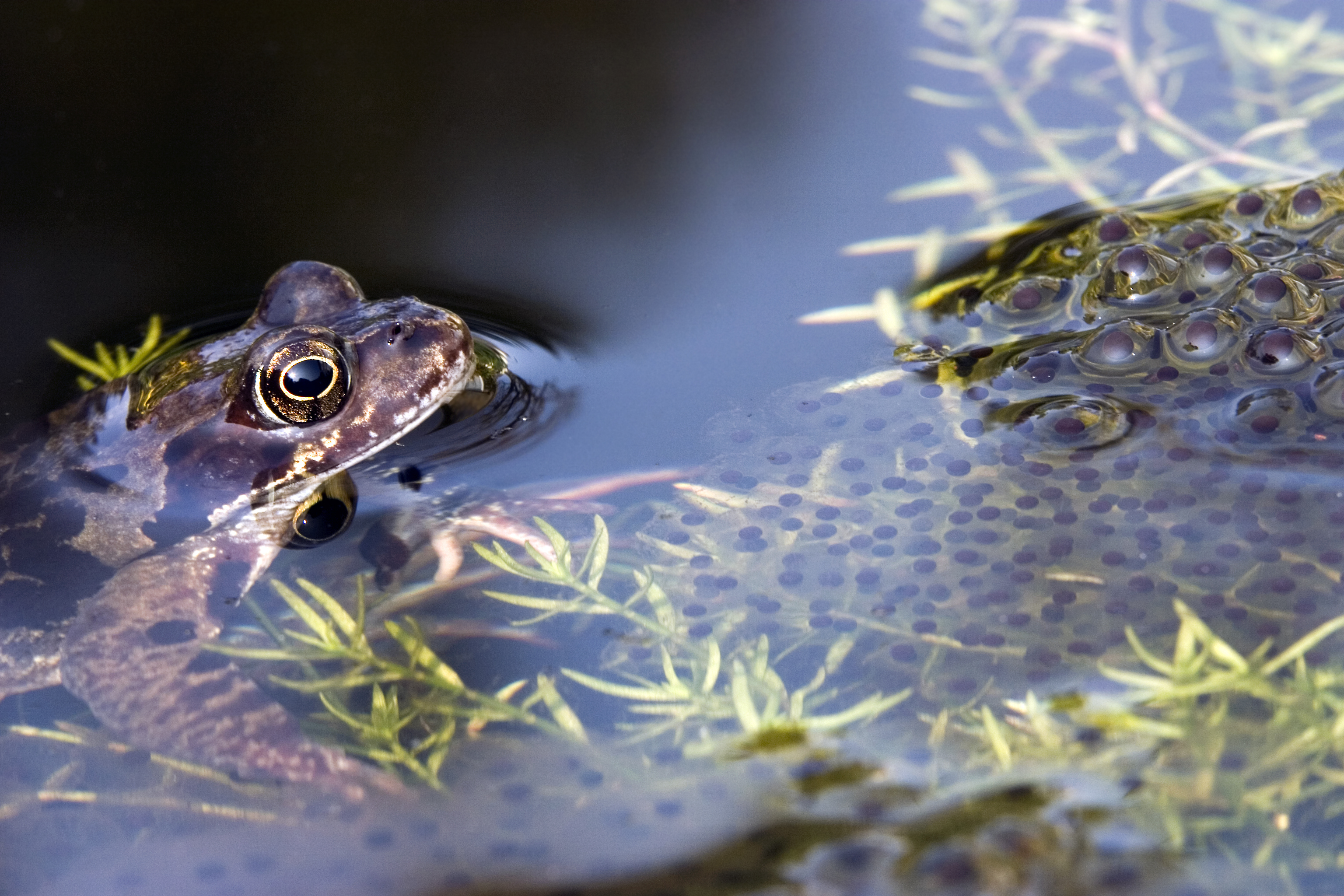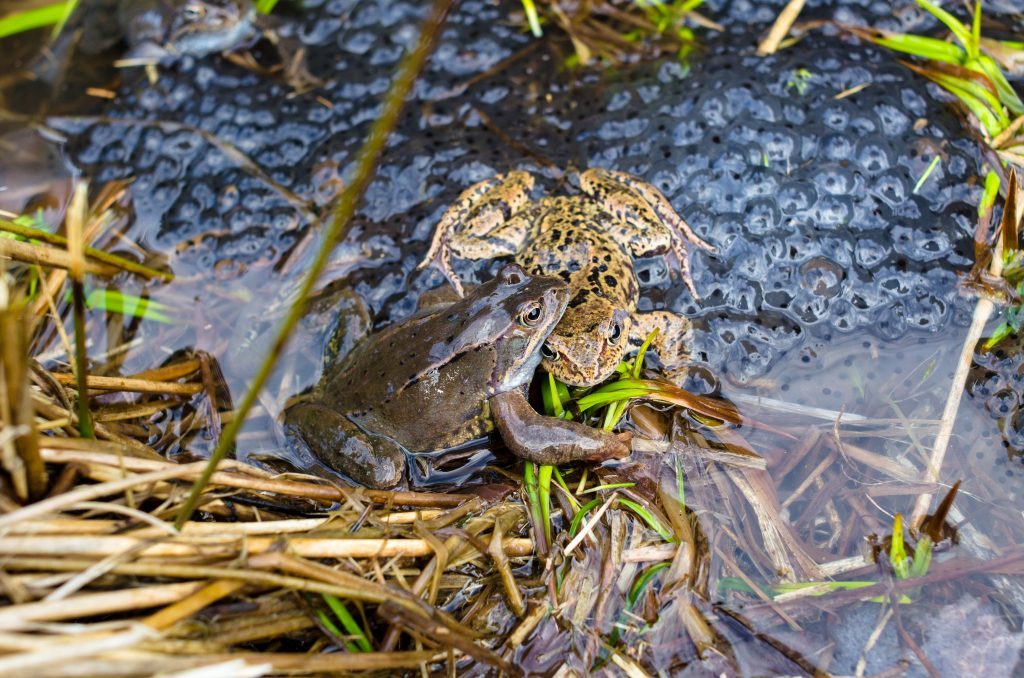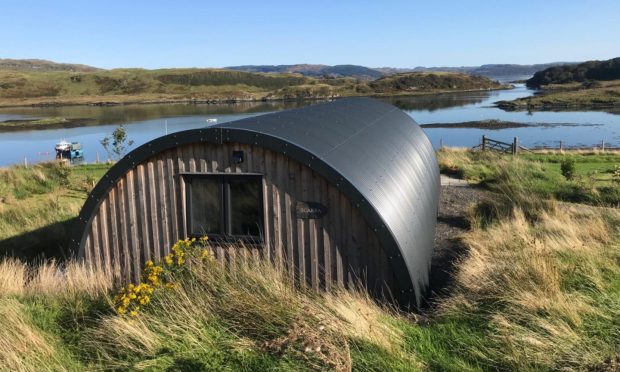Now here’s a thing; in 2016 I stumbled upon my first frog spawn of the season in a ditch in Glendevon on 5 March and I’m fully expecting to beat that date this year. Indeed, I would wager on finding my first spawn in the last few days of February, especially since the winter has been so mild.
Hardly earth shattering stuff, you say. But I would beg to differ, because I remember clearly as a young wildlife enthusiast in the 1970s discovering the first spawn of the year on or around 20 March. Anecdotal for sure, but the trend is distinct, our frogs are spawning earlier than ever before, and for me, a clear indicator of our warming planet.
I’m not sure whether this warming trend is beneficial or not to our frogs. Emerging earlier puts them at greater risk from sudden cold snaps, but on the plus side it gives tadpoles a longer growing period. Hill frogs, such as those at Glendevon, live life on the edge anyway because as summer progresses the water in shallow ditches holding their tadpoles quickly recedes, especially when the weather is dry. It is a race against time and my heart sinks if by early August the water has gone and the tadpoles perish.
Walking by my local river recently, it suddenly struck me that it has been several years since I had last seen an eel. They are such fascinating creatures with a most mysterious lifecycle.
Aristotle thought eels generated spontaneously from mud or slime and Pliny the Elder suggested that eels rub their skin against rocks and the pieces that came off turned into young eels. Isaak Walton in his classic work The Compleat Angler published in 1653 postulated that eels generated by “…the sun’s heat or out of the putrefaction of the earth”.
The reason for such confusion lay in the fact that nobody had ever discovered a mature eel laden with eggs or milt and it is only in the last 100 years or so that it has been deduced that eels in fact embark upon an epic 5,000km migration from our rivers to the Sargasso Sea off central America to spawn. In what must rank as one of the most incredible of biological feats, the tiny glass-like larvae then gradually drift back to Europe on the Gulf Stream before ascending our rivers as elvers.
Eels are tough creatures and can even leave the water at times to make their way from one body of water to another, slithering across damp grass on dark moonless nights.
But sadly, the previously abundant eel is now in crisis with numbers throughout Europe plummeting to alarmingly low levels. The cause for the fall is a bit of a mystery, but is most likely down to a combination of factors, including possibly global warming – a case of the frog and the eel both being affected by the same phenomenon, albeit in rather different ways.
Info
The best time to see mating frogs is in mid-morning when the sun is shining – the frogs love the warmth it brings which spurs them into activity, with there being much resonant croaking.











